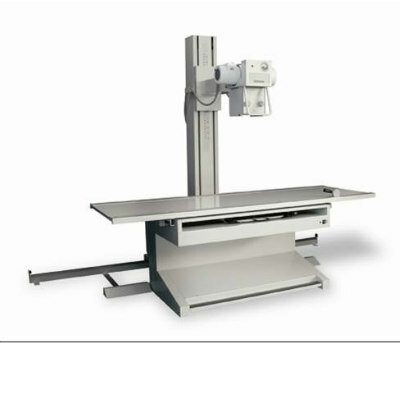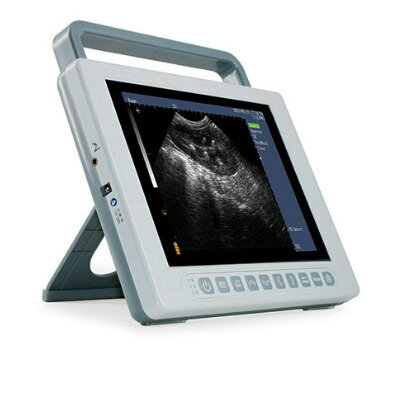Artificial Intelligence Technology Produces CT Images Based on MRI Without Exposure to Radiation
|
By MedImaging International staff writers Posted on 11 Nov 2021 |

Researchers have developed an artificial intelligence (AI) technology to generate CT images based on MRI images without exposure to radiation.
The results of a simulation experiment conducted by researchers at the Korea Institute of Science and Technology (KIST; Seoul, South Korea) have shown that the transcranial focused ultrasound procedure could be performed with MRI alone. Transcranial focused ultrasound can be used to treat degenerative movement disorders, intractable pain, and mental disorders by delivering ultrasound energy to a specific area of the brain without opening the skull. This treatment must be performed with an image-based technology that can locate the brain lesions.
Doctors typically use CT to obtain information about a patient's skull that is difficult to identify with MRI alone and to accurately focus the ultrasound on the lesions through the skull. However, there have been concerns about the safety of CT scans, during which radiation exposure is inevitable, especially in pediatric and pregnant patients. Efforts have been made to obtain cranial information from MRI images, but special coils for the MRI or imaging protocols that are not widely available in the medical field are required. As an alternative, interest for acquiring AI-based CT images has been high worldwide, but their clinical efficacy has not been proven.
The KIST research team proved that CT images obtained by AI have clinical utility. The researchers developed a three-dimensional conditional adversarial generative network that learns the nonlinear CT transformation process from T1-weighted MRI images, which is one of the most commonly used images in the medical field. The team devised a loss function that minimizes the Hounsfield unit pixel variation error of the CT images, and also optimized the neural network performance by comparing the changes in quality of the synthetic CT images according to the normalization methods of MRI image signals, such as Z-score normalization and partial linear histogram matching normalization.
For safe and effective ultrasound treatment, it is imperative to understand each patient's skull density ratio and skull thickness in advance, and when these skull factors were obtained via the synthetic CT, both factors showed >0.90 correlation with the actual CT. There was no statistically significant difference. Moreover, when simulated ultrasound treatment was performed, the ultrasound focal distance had an error of less than 1 mm, the intracranial peak acoustic pressure had an error of approximately 3.1%, and the focal volume similarity was approximately 83%. This demonstrated that the transcranial focused ultrasound treatment system can be performed with only the MRI image.
"Patients can receive focused ultrasound treatment without being worried about radiation exposure, and as the additional imaging and alignment processes can be omitted, this will reduce the staff's workload, leading to a reduction in time and economic costs," said Dr. Hyungmin Kim at KIST’s Bionics Research Center. "Through follow-up studies on identifying the error associated with the ultrasound parameters and transducers and understanding the possibility of artificial intelligence CT application in various parts of the body, we plan to continue developing the technology for its applicability in various treatment technologies."
Related Links:
Korea Institute of Science and Technology
Latest General/Advanced Imaging News
- New AI Method Captures Uncertainty in Medical Images
- CT Coronary Angiography Reduces Need for Invasive Tests to Diagnose Coronary Artery Disease
- Novel Blood Test Could Reduce Need for PET Imaging of Patients with Alzheimer’s
- CT-Based Deep Learning Algorithm Accurately Differentiates Benign From Malignant Vertebral Fractures
- Minimally Invasive Procedure Could Help Patients Avoid Thyroid Surgery
- Self-Driving Mobile C-Arm Reduces Imaging Time during Surgery
- AR Application Turns Medical Scans Into Holograms for Assistance in Surgical Planning
- Imaging Technology Provides Ground-Breaking New Approach for Diagnosing and Treating Bowel Cancer
- CT Coronary Calcium Scoring Predicts Heart Attacks and Strokes
- AI Model Detects 90% of Lymphatic Cancer Cases from PET and CT Images
- Breakthrough Technology Revolutionizes Breast Imaging
- State-Of-The-Art System Enhances Accuracy of Image-Guided Diagnostic and Interventional Procedures
- Catheter-Based Device with New Cardiovascular Imaging Approach Offers Unprecedented View of Dangerous Plaques
- AI Model Draws Maps to Accurately Identify Tumors and Diseases in Medical Images
- AI-Enabled CT System Provides More Accurate and Reliable Imaging Results
- Routine Chest CT Exams Can Identify Patients at Risk for Cardiovascular Disease
Channels
Radiography
view channel
Novel Breast Imaging System Proves As Effective As Mammography
Breast cancer remains the most frequently diagnosed cancer among women. It is projected that one in eight women will be diagnosed with breast cancer during her lifetime, and one in 42 women who turn 50... Read more
AI Assistance Improves Breast-Cancer Screening by Reducing False Positives
Radiologists typically detect one case of cancer for every 200 mammograms reviewed. However, these evaluations often result in false positives, leading to unnecessary patient recalls for additional testing,... Read moreMRI
view channel
PET/MRI Improves Diagnostic Accuracy for Prostate Cancer Patients
The Prostate Imaging Reporting and Data System (PI-RADS) is a five-point scale to assess potential prostate cancer in MR images. PI-RADS category 3 which offers an unclear suggestion of clinically significant... Read more
Next Generation MR-Guided Focused Ultrasound Ushers In Future of Incisionless Neurosurgery
Essential tremor, often called familial, idiopathic, or benign tremor, leads to uncontrollable shaking that significantly affects a person’s life. When traditional medications do not alleviate symptoms,... Read more
Two-Part MRI Scan Detects Prostate Cancer More Quickly without Compromising Diagnostic Quality
Prostate cancer ranks as the most prevalent cancer among men. Over the last decade, the introduction of MRI scans has significantly transformed the diagnosis process, marking the most substantial advancement... Read moreUltrasound
view channel
Deep Learning Advances Super-Resolution Ultrasound Imaging
Ultrasound localization microscopy (ULM) is an advanced imaging technique that offers high-resolution visualization of microvascular structures. It employs microbubbles, FDA-approved contrast agents, injected... Read more
Novel Ultrasound-Launched Targeted Nanoparticle Eliminates Biofilm and Bacterial Infection
Biofilms, formed by bacteria aggregating into dense communities for protection against harsh environmental conditions, are a significant contributor to various infectious diseases. Biofilms frequently... Read moreNuclear Medicine
view channel
New SPECT/CT Technique Could Change Imaging Practices and Increase Patient Access
The development of lead-212 (212Pb)-PSMA–based targeted alpha therapy (TAT) is garnering significant interest in treating patients with metastatic castration-resistant prostate cancer. The imaging of 212Pb,... Read moreNew Radiotheranostic System Detects and Treats Ovarian Cancer Noninvasively
Ovarian cancer is the most lethal gynecological cancer, with less than a 30% five-year survival rate for those diagnosed in late stages. Despite surgery and platinum-based chemotherapy being the standard... Read more
AI System Automatically and Reliably Detects Cardiac Amyloidosis Using Scintigraphy Imaging
Cardiac amyloidosis, a condition characterized by the buildup of abnormal protein deposits (amyloids) in the heart muscle, severely affects heart function and can lead to heart failure or death without... Read moreImaging IT
view channel
New Google Cloud Medical Imaging Suite Makes Imaging Healthcare Data More Accessible
Medical imaging is a critical tool used to diagnose patients, and there are billions of medical images scanned globally each year. Imaging data accounts for about 90% of all healthcare data1 and, until... Read more
Global AI in Medical Diagnostics Market to Be Driven by Demand for Image Recognition in Radiology
The global artificial intelligence (AI) in medical diagnostics market is expanding with early disease detection being one of its key applications and image recognition becoming a compelling consumer proposition... Read moreIndustry News
view channel
Bayer and Google Partner on New AI Product for Radiologists
Medical imaging data comprises around 90% of all healthcare data, and it is a highly complex and rich clinical data modality and serves as a vital tool for diagnosing patients. Each year, billions of medical... Read more





















